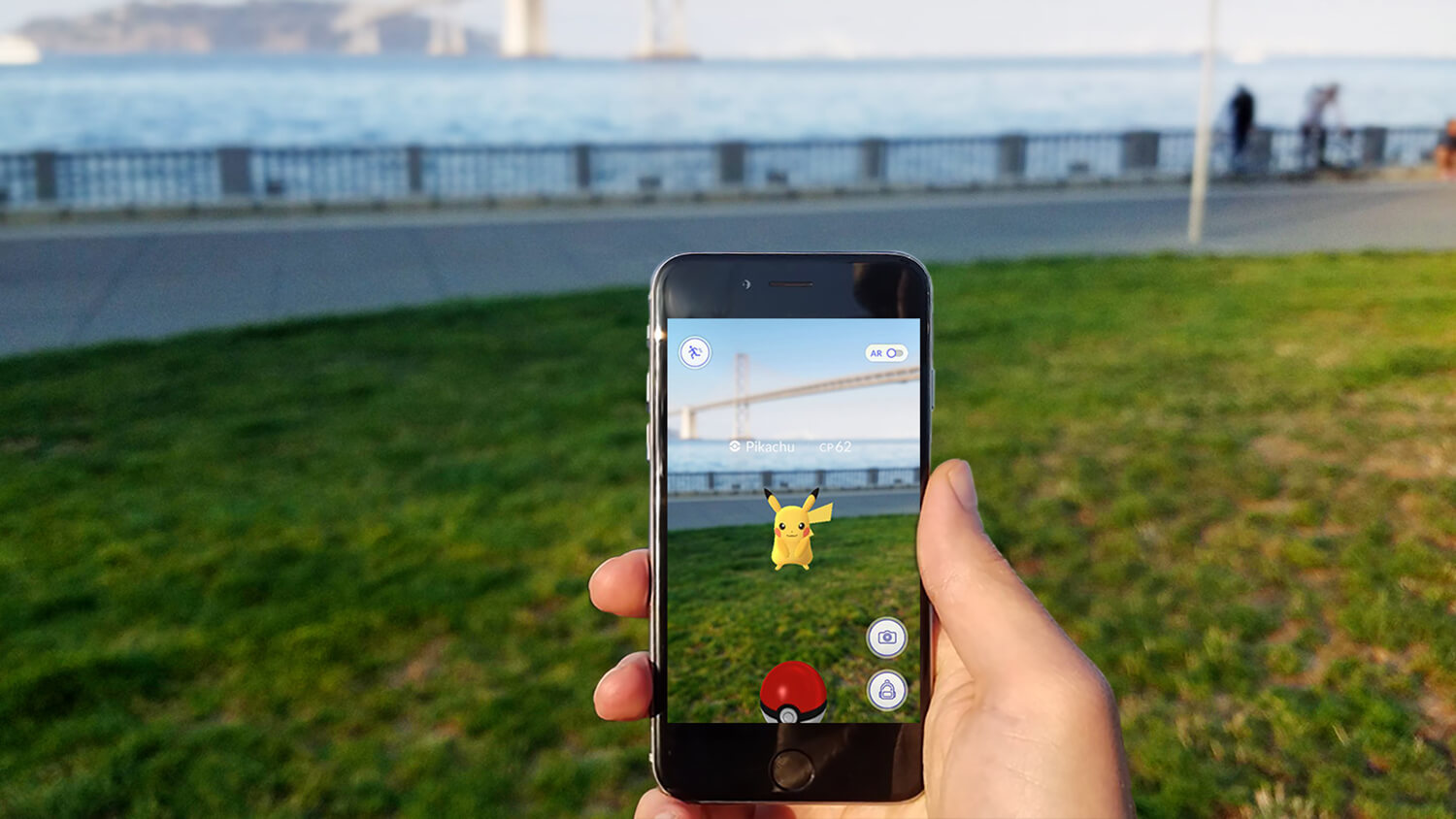Featured image from http://www.digitaltrends.com/
Updated on February 10, 2020.
Amassing over 500 million downloads and spanning users in 100 countries, Pokemon Go ignited a frenzy among mobile users.
Released as a free mobile app, Pokemon Go uses your phone’s GPS, camera, and augmented reality to digitally place Pokemon in your surroundings. One of the app’s biggest achievements was introducing AR to a mainstream, global audience. What are the factors that made it so successful, and how can brands adopt similar marketing strategies to their advantage?
Augmented Reality vs. Virtual Reality
First, let’s examine the differences between virtual reality and augmented reality. Though they may seem similar, both serve different purposes.
Virtual reality, which typically requires a headset, strives to immerse users in a three-dimensional, interactive environment by using video or CGI. For example, a brand might use VR to create an immersive documentary or make an interactive game that advertises its products.
Augmented reality, however, enhances the real world by combining live surroundings with virtual objects and graphics. This makes it another interesting potential technology for brands: a clothing company, for example, could use AR to allow its users to virtually try on clothes.
AR Campaigns
This campaign from IKEA exemplifies how companies can use AR to give customers a better idea of their products in their own lives. By scanning the pages of a catalog on their phones, users were able to digitally envision how IKEA products would look in their living rooms.
Another example of a good use of AR is Ray-Ban’s Virtual Mirror, which allows customers to virtually try on sunglasses online. The benefit of such a feature is obvious: rather than having to go to stores, customers can test products of interest from the comfort of their home.
Admittedly, virtually trying on sunglasses is not quite the same as feeling the fit of the frame or seeing the color in person. However, AR can often pique the initial interest of customers.
For example, AMC Theatres was able to achieve a 75% CTR, or click-through rate, with an AR campaign that allowed customers to scan movie posters with their phone to see fun animations, as well as sweepstakes that allowed them to win prizes and earn coupons.
As AR continues to evolve, it is an exciting technology to keep an eye on that could transform the ways we shop, watch, and experience the products and services in our lives.
AR Strategies
When examining the success of Pokemon Go, several factors stand out. For one, the AR gameplay doesn’t require a clunky headset or glasses. Rather, it was released as a free app that could be downloaded and played simply with a phone. Because headsets can often be a barrier for interested consumers, this greatly helped to increase accessibility.
Additionally, the mobile, active aspect of the game is another factor that helped draw in users. When weighing the options between mobile branded content and desktop-limited content, it is often better to try to make content mobile-friendly. Think about it: customers can access your content when they are waiting in line for their coffee or taking a stroll around the park.
The most powerful element of any viral campaign, however, is its shareability. In the case of Pokemon Go, in addition to Pokemon’s existing fan base, the social element of the game was a key factor that kept users entertained – users were able to form teams and share their progress over social media.
So, when planning a VR or AR campaign, here are some important questions to take into consideration: Is this content shareable? Can users interact and bond over this content? Try to incorporate these factors the next time you are strategizing your marketing plan to get the most out of your branded content.
